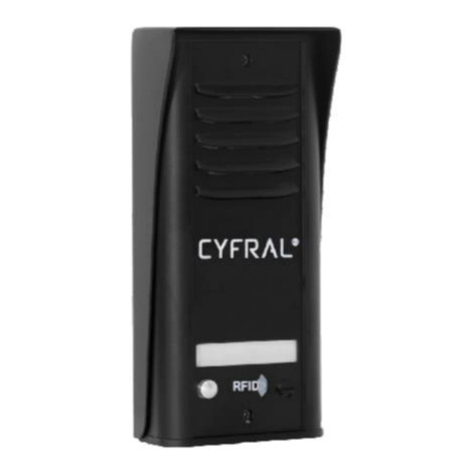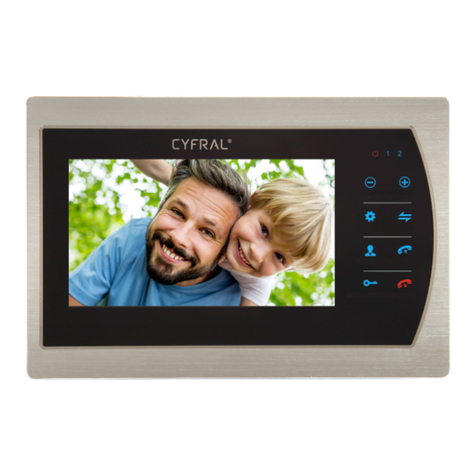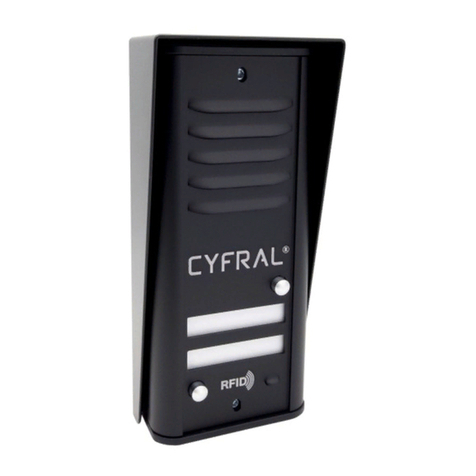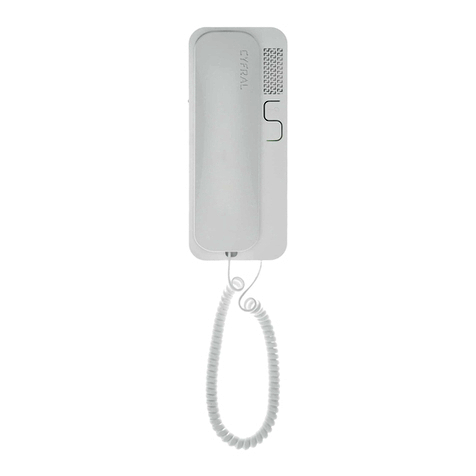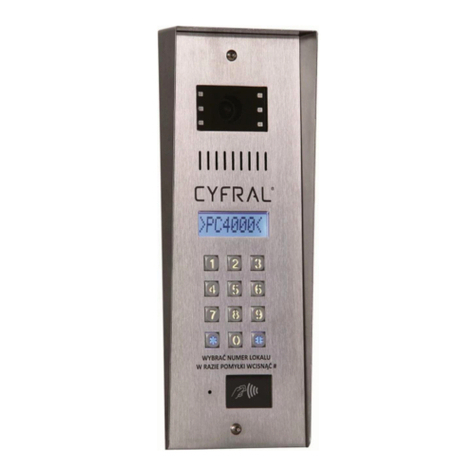
~2~
TABLE OF CONTENTS
1. System Features .....................................................................................................................................................3
2. Programming of CC40005 system ..........................................................................................................................5
3. Description of programs..........................................................................................................................................5
3.1. P01 Panel.................................................................................................................................................................6
3.1.1. Panel type...................................................................................................................................................................................................... 6
3.1.2. Range of dialed numbers..............................................................................................................................................................................6
3.1.3. Main electric strike configuration..................................................................................................................................................................7
3.1.4. Additional electric strike configuration..........................................................................................................................................................7
3.1.5. Built-in combination lock...............................................................................................................................................................................7
3.1.6. Factory settings.............................................................................................................................................................................................8
3.1.7. Service key fob..............................................................................................................................................................................................8
3.1.8. Administrator passcode ................................................................................................................................................................................8
3.1.9. Software version ...........................................................................................................................................................................................8
3.2. P02 Control panel.....................................................................................................................................................8
3.2.1. Ringing time ..................................................................................................................................................................................................8
3.2.2. Ring volume ................................................................................................................................................................................................. 8
3.2.3. Ringtone type............................................................................................................................................................................................... 9
3.2.4. Call time.........................................................................................................................................................................................................9
3.2.5. Waiting time for picking up the handset.......................................................................................................................................................9
3.2.6. Signalling of opening.....................................................................................................................................................................................9
3.2.7. Deleting control panel ...................................................................................................................................................................................9
3.2.8. Factory settings.............................................................................................................................................................................................9
3.2.9. Control panel program version .................................................................................................................................................................... 9
3.3. P03 Subscribers .....................................................................................................................................................10
3.3.1. Adding a subscriber ....................................................................................................................................................................................10
3.3.2. Deleting a subscriber .................................................................................................................................................................................10
3.3.3. Simple initialisation of a subscriber table...................................................................................................................................................10
3.3.4. Advanced initialisation of a subscriber table..............................................................................................................................................10
3.3.5. Deleting a subscriber table .........................................................................................................................................................................11
3.3.6. Individual settings.......................................................................................................................................................................................11
3.3.7. Office mode.................................................................................................................................................................................................11
3.3.8. Subscriber installation mode ......................................................................................................................................................................11
3.3.9. Searching for short circuits mode..............................................................................................................................................................11
3.4. P04 Codes..............................................................................................................................................................11
3.4.1. Adding a subscriber's code.........................................................................................................................................................................10
3.4.2. Deleting a subscriber's code.......................................................................................................................................................................11
3.4.3. Changing a subscriber's code ....................................................................................................................................................................12
3.4.4. Adding a shared opening code...................................................................................................................................................................12
3.4.5. Deleting a shared opening code.................................................................................................................................................................12
3.4.6. Deleting all opening codes of all subscribers.............................................................................................................................................12
3.4.7. Restoring an opening code table to the default value ...............................................................................................................................12
3.5. P05 Keys................................................................................................................................................................12
3.5.1. Adding an electronic key.............................................................................................................................................................................12
3.5.2. Adding a non-recorded electronic key........................................................................................................................................................12
3.5.3. Deleting an electronic key...........................................................................................................................................................................12
3.5.4. Deleting of all subscriber's electronic keys ................................................................................................................................................13






